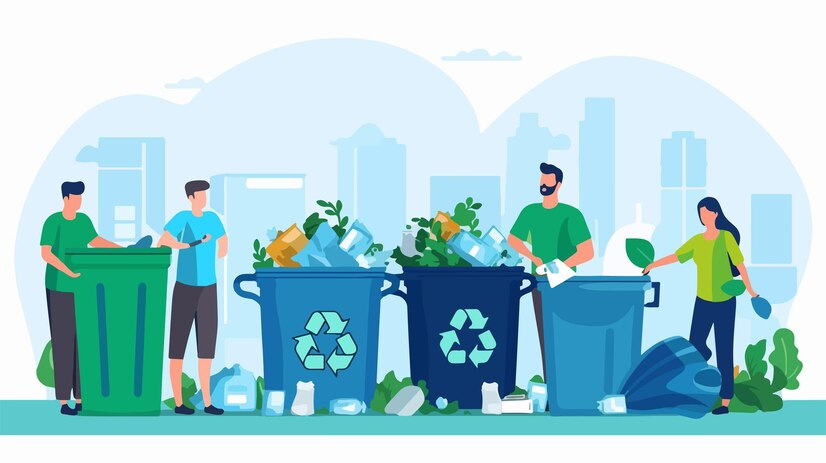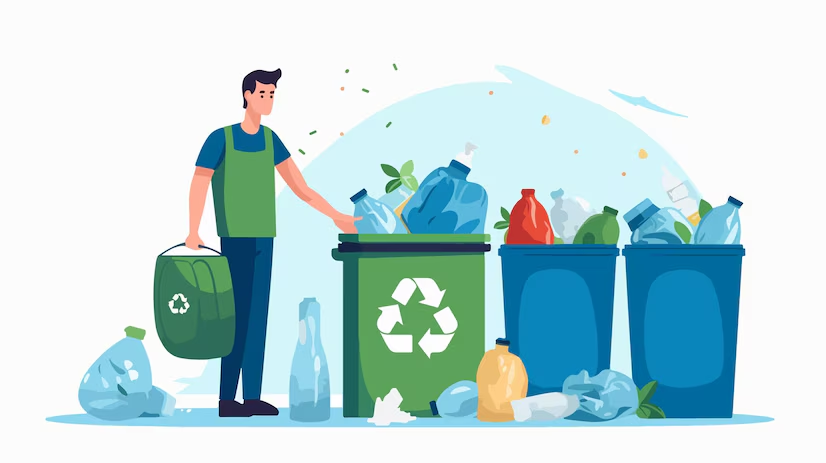Streamlining Solid Waste Collection Routes for Cost-Effective Operations
Managing solid waste has become an integral city, town, or municipal service for places all over the world. Since their populations are still growing and so is the generation of wastes, the operations must become ever more efficient and cost-effective. An important improvement area thus pertains to optimizing the solid waste collection routes. Such streamlining generates large savings, reduces environmental impacts, and improves the quality of service rendered.
Why is Optimization of Solid Waste Collection Routes Important?
Collection of solid wastes is an extremely resource-intensive activity that takes the major portion of the municipal waste management budget. Optimizing the approach towards collection routes can make it inefficient, leading to unwanted fuel costs, unnecessary wear and tear of vehicles, higher labor costs, and longer hours of collection time. These inefficiencies not only hurt the bottom line but also cause unnecessary emissions, congestion, that are damaging to both the environment and public health.
The inefficiencies will best be countered with the optimization of routes in which solid waste is collected. Saving on distances truck coverages as well as avoiding traffic congestion zones can cut back significantly on operational costs, save fuel, and improve the delivery of services to residents and businesses alike. There is an optimization process where route designs, traffic distribution, rate of waste generation, and bin capacity are analyzed and then used to form more efficient collection schedules.
How Route Optimization Works
Route optimization essentially means finding the optimal paths for collection trucks to travel through to collect wastes at all the required collection points. The aim here is to minimize the total distance traveled, the time spent on the road, and the fuel consumed. In designing optimized solid waste collection routes, there are some major considerations:
Geography: The physical lay out of the service area is important. Congested urban areas with narrow streets and heavy traffic require a different approach than spread-out suburban or rural areas.
Waste Generation Patterns: Areas within a given service area generate different quantities of waste due to population density, business activity, and seasonal changes. This information ensures that trucks are moved to points of greatest need and misses and overflows are prevented.
Fleet and vehicle capabilities: The size and type of the waste collection trucks are some of the factors that can influence how one designs routes. Larger trucks often mean more frequent trips to a disposal site, while smaller trucks may navigate narrow streets with ease.
Traffic and Time of Day: This can also impact collections significantly on collection routes by the peak hours of traffic. Optimizing routes based on the peak hours of traffic helps avoid delay and keeps trucks on schedule.
Bin Capacity and Frequency of Collection: The general fill rate of bins should be known, and collections should thus be scheduled so that the trucks do not run idle over half-empty bins nor miss over-filled ones.
Even though a company uses modern technologies, like GPS tracking, GIS, and data analysis, waste management companies can remain aware of every one of these factors in real-time. More sophisticated software than merely driver routes means that even with live data, these systems automatically change routes to make the most efficient routes possible and avoid delays.
Key Route Optimization Technologies
Many technologies that support the optimization of routes for the collection of solid wastes have emerged over the past few years. Through these technologies, the whole process of waste management is now undergoing a stage where waste management moves from being manual to data-driven and automated. A few of the most impactful technologies include:
1. Route Optimization Software
The heart of a new system in waste management is the route optimization platform, which absorbs masses of data such as traffic patterns, geographic layouts, and statistics of waste generation to come up with efficient collection routes. Most provide real-time updates, thereby allowing waste management companies to change the routes if conditions change, such as road closure or an unexpected rise in waste generation.
Most popular solutions include third-party tools for predictive analytics, report on historical data, and dynamic adjustment of routes. These help waste management companies create optimally routable routes that take the least time in traveling, cuts down on the consumption of fuel, and are collected when they need to be.
2. GPS and Telematics
GPS and telematics systems are particularly critical for monitoring and optimizing the performance of collection trucks. GPS enables real-time monitoring of vehicle positions so that managers can ensure drivers are following optimized routes and are not likely to be held up. A telematics system monitors vehicle performance data to help realize fuel efficiency, check the engine's health, and understand driver behavior.
Route optimization software coupled with GPS and telematics systems helps waste management companies optimize their business and eliminate inefficiency-driven wasteful spends in idling time, speeding, or inefficient routes.
3. Smart Trash Can
The Internet of Things revolution has brought attention to the smart waste bins. The bins are embedded with sensors that will measure fill levels and communicate with the waste collection system. Smart waste bins inform a firm about how full a particular bin is to the waste management firms in real time. It helps companies optimize routes according to the actual demand. Trucks thereby avoid partially filled bins and do not make unnecessary trips, which would imply wasted time and resources.
Smart bins are especially of high utility in places where the generation of waste is unpredictable. This includes commercial districts and large events where the amount of waste is uncertain. By integrating smart waste bins into their collection systems, firms operating in the waste management sector may further optimize a system of collecting solid waste, ensuring that trucks visit bins only when they are full.
4. Geographic Information Systems (GIS)
The GIS technology enables managing companies to see the natural resource area in which they work, the road network and population patterns-distribution of living and so on-under geography. Thus, the comprehensive view via GIS favors route planners in finding more effective routes for the waste collection truck. Other than routing it could be put forth to look deeper into long-term trends of waste generation, identify the problem areas and bring about changes in general service planning.
Advantages of Optimizing Solid Waste Collection Routes
Optimizing the routes taken for collecting solid wastes is a good investment with many compelling reasons ranging from cutting costs to environmental performance improvement.
1. Saving costs
Probably one of the most direct financial benefits of route optimization is lower operating costs. Shorter, more direct routes reduce time spent in the field, resulting in less fuel consumption and lower vehicle wear and tear. Labor costs decline with reduced hours of overtime by waste collection crews completing their work more efficiently.
Implementing optimal routes will also allow waste management companies to decrease unnecessary trips, like visiting half-full bins or driving through areas where there is minimal waste generation. This decreases costs and increases the productivity of the entire fleet.
2. Environmental Impact
Many towns and waste management organizations work hard to minimize the ecological impact of waste collection in order to cut down their environmental footprint. Among the heavy equipment vehicles, there is the garbage truck that requires a lot of fuel. In addition to that, it contributes significantly to pollution when the vehicle idles in traffic or runs over long distances less efficiently.
Optimized routes minimize the consumption of fuel, hence emissions of carbon, leaving a smaller footprint on the environment. On the other hand, since fewer trucks are on the road, cities experience less traffic congestion, improving quality air; therefore, these cities are clean and green.
3. Improvement in Quality of Service
This will facilitate more efficient, reliable, and timely service in door-to-door collection for residents and businesses. Missed pickups and overflowing bins can really cause frustration to customers, but optimized routes ensure that the collection of waste is on time and without undue delay. It can be scheduled in areas where overflows are likely since of high waste generation, while less-demanding areas would be serviced less often to have overall quality of service.
4. Data-Driven Decision Making
Route optimization technology yields quality data that overtime assists waste collection management improvement. This is obtained through data monitoring of waste generation patterns, traffic conditions and collection efficiency. A company providing waste management services will make the right decisions regarding resource allocation, fleet size, and collection schedule. This is how the data-driven approach can assist a waste management company to always refine its operations and even attain greater efficiencies.
Overcoming Route Optimization Challenges
While the payback from route optimization in solid waste collection is clear, the following are challenges that municipalities and waste management companies have to face:
Cost of Implementation: Putting into place route optimization systems, GPS tracking, and smart waste bins is costly upfront both in terms of technology and training requirements. However, the long-term cost saving with gains in operational efficiency usually offsets the initial cost.
Changing Regulation: The industry of waste management is very regulated. Changes in environmental or labor regulations can fall on the planning and implementation of routes. Therefore, regulatory requirements will have to be fulfilled by waste management companies while they can be as efficient as possible.
Some districts generate more than one type of waste: recyclables, organic waste, and hazardous materials. The routes of such a diverse mix of waste streams require very careful planning to ensure each of them is collected as efficient and environmentally friendly as possible.
The Future of Solid Waste Collection
Technologically speaking, the future of solid waste management will most likely evolve into increasingly more efficient and environmentally sustainable strata. Larger roles for routing algorithms, artificial intelligence, and machine learning will probably dominate waste management, allowing even smarter routes to be planned and be dynamically adapted in real time toward waste management.
In addition, the integration of electric and self-driving waste collection trucks in waste collection operations will further reduce the environmental impacts of waste collection operations. Electric trucks emit no emissions. They can operate effectively in densely populated urban environments with the best operations possible, while self-driving vehicles can run operations on a continuous basis without labor and thus greatly reduce labor costs and improve efficiency.
Conclusion
Given the rapid growth of cities and the continually increasing amount of garbage being produced, waste collection strategies will be optimized much more in the future. Companies involved in waste management activities and wish to increase their productivity should invest more in route optimization software and technology. In order to achieve maximum service capabilities, companies may adopt commercial bin collection strategies, wherein the collection of wastes is scheduled according to the specific needs of businesses thus ensuring a regular and efficient supply of waste management for everybody.




Comments
Post a Comment